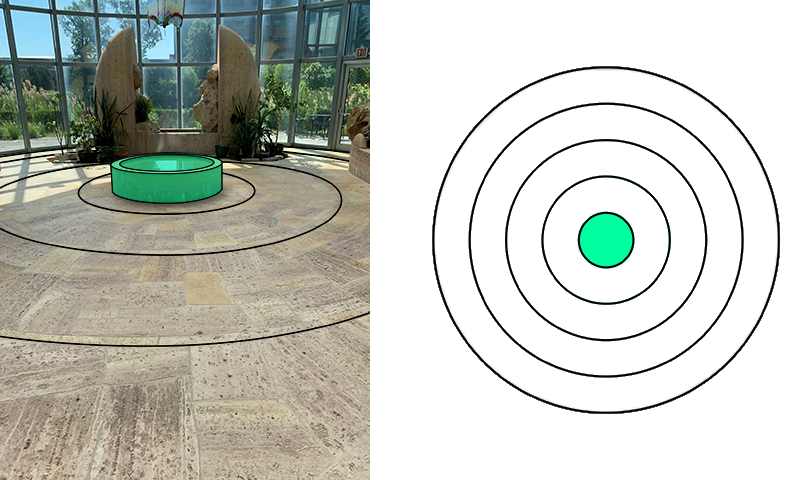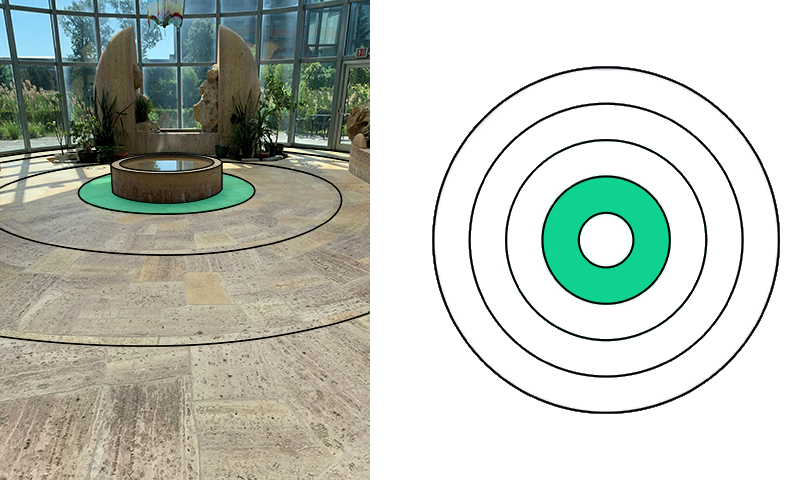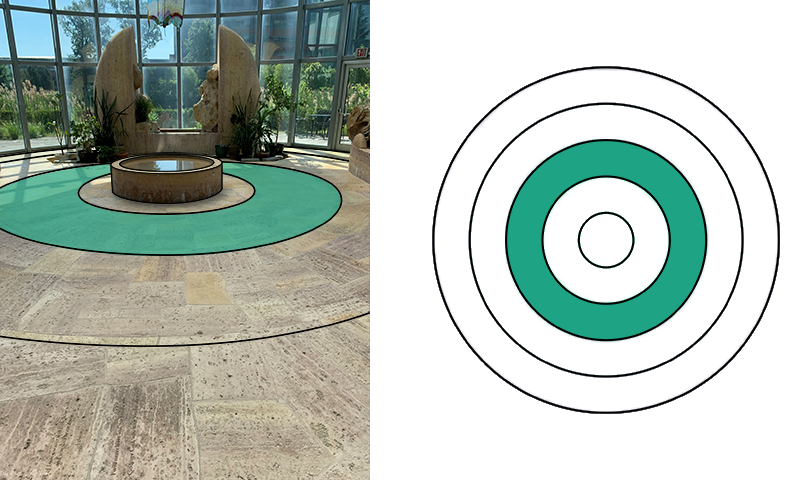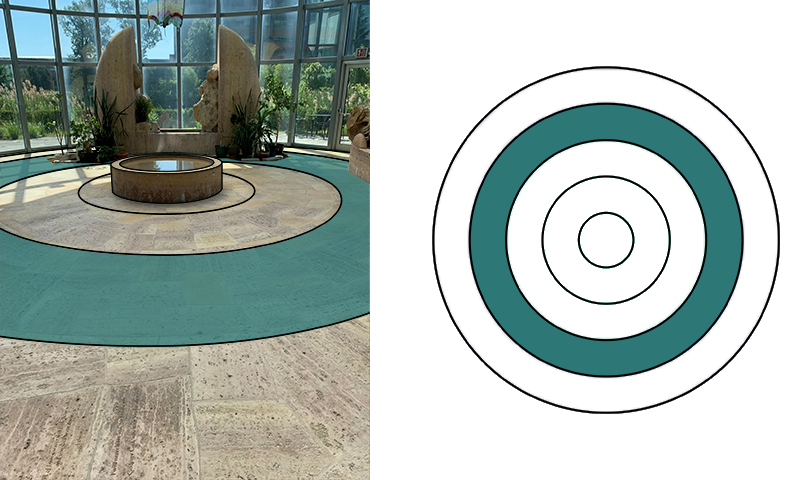Initiation and the Great Soul
The term initiation refers to either an organized series of experiences or a less organized school of hard knocks, both of which can bring about maturity. Robert Frost said that both kinds of initiation are necessary to understand his poetry, “It takes all sorts of in- and outdoor schooling / to get adapted to my kind of fooling.” The initiate is the term for the innocent virgin on the threshold of maturity. In so-called “primitive” cultures it was necessary to draw a clear line between child and adult with an initiation ritual. The common form for this ritual entails removal of the initiate from the comfort and security of their everyday community, followed by an immersion into a mystery central to the life of the tribe. This might include an encounter with great ancestors or revered tribal mysteries (the reveal), facing of fears, or a painful encounter which once endured leaves a mark on the body and soul that assures there is no going back to childish innocence. The initiate is then returned to the culture as an adult and is now worthy to participate in previously restricted adult responsibilities and pleasures. College fraternities and sororities often mark admission with an initiation rite, and almost every faith has an adolescent initiation ritual to assure maturity.
Illness has long been recognized as an initiation with the concept of the cancer journey being a prime example. Here, the patient is an initiate who must leave familiar comforts and travel through a world of anguish to fight for and win back the life that was previously free. Depending on how harrowing the journey is, the person’s very idea of self and life may be irrevocably changed. Any notions of entitlement, fairness, or security are disrupted as one realizes a tenuous balance, replacing solid ground with a high wire act lacking a safety net. Surprisingly, most patients return to life with a calm resolve after having been exposed to this terror. Cancer patients can become like iron workers at ease on beams far above New York City. Most become more free, not less.
The biblical story of Job is arguably the greatest initiation story ever written. Illness is the vehicle of initiation, and utter transformation is presented in spectacular detail. Job is a wealthy man with everything until God introduces him to Satan, “Behold my servant, Job.” Satan retorts, “Of course, he is your servant and loves you. You have spoiled him with everything a man could ever want. Take it away, and he will curse you.”
The initiation cycle begins. First, Job loses everything precious to him including wealth and family. These could abstractly be termed the positive pole of experience. But Job endures and even accepts his situation. Satan then says, “Afflict him with a terrible illness, and he will curse you.” Job is then subjected to a terrible, painful illness that abstractly could be called subjection to the negative pole of experience (or suffering), which is much deeper than the loss of the positive.
Job snaps and confronts God, demanding an explanation; yet still doesn’t curse Him. His friends have assured Job the world is just and that all this is happening as punishment for a sin he has failed to acknowledge. Job has always been a good man and knows there is no hidden sin worthy of this suffering. Most readers conclude that Job does not receive a direct answer to the question of why he must suffer. Some would paraphrase the Almighty’s answer harshly as, “Suck it up, you worthless worm.” But Job is eventually released from his suffering not by removal of the painful illness, but rather by a violent removal of his egocentric frame of reference and his tragically flawed ideas and assumptions about the nature of life. The answer to Job is not a legal, moral framing and answering of his question, but instead is the breathtaking wonder of the universe; he is subject to an overwhelming vision of grandeur and glory, perhaps the ultimate initiation reveal of all time, and his question all but disappears, swallowed in wonder.
In Buddhist terms he becomes enlightened. His previous ideas about life had created expectations that were not aligned with ultimate reality. Once Job is aligned his suffering ends and his losses are restored. He has come full circle, but only after his transformation.
The Reflection Space at The Assarian Cancer Center in Novi contains a circular map of initiation, an initiation cycle. It moves from the positive pole to the negative pole with four stations to mark the journey. Wendell Heers, the architect who designed the stone sculptures which mark these stations, was quite familiar with this path through his own wife’s terminal illness.
The Assarian cycle begins in a positive state of wholeness progresses through:

- The loss of the positive
- Suffering the negative
- Release from the negative
- Restoration of the positive
This circular journey from station to station in time is not, however, the whole story. For most patients, these movements are happening in life simultaneously. The initiation cycle itself is a distinctly Western cultural view - the wheel of fortune, the dramatic agony and ecstasy of life.
The Calm at the Center

Buddha said, “Get off the wheel.” The powerful Eastern antidote to the wheel is to find the calm at the center. This is represented in the Reflection Space by a small, calm pool that is periodically disrupted by drops from the sculpture above. In this schema the pool is fetal life, never alternating between the positive and negative poles. For eons humans have longed to return to fetal bliss.
Unconditional Love

Surrounding this pool are four rings of maturity. These rings of initiation move from the positive to the negative and back. The first and innermost ring is that of unconditional love. An infant, for example, moves from satiation and comfort to the agony of hunger - utterly unable to help himself. His needs are met by a figure who mysteriously appears and restores peace. This cycle continues several times a day for the years of infancy. At times, the baby’s needs are not immediately met, and he screams out to the point of tantrum and rage. An infant can, therefore, move from the broken state of abandonment to one of restoration and redemption. This alternation continues as he grows in experience and he begins to recognize and bond with his redeemers. The child then reaches a state of security and calm, with the confidence that he will be cared for. The realization of this state is further explored in the song Buddha Baby.
Conditional Love

In the second ring is conditional love. The negative is not a state of deprivation, but a state of punishment. The positive is not a shower of unconditional love, but is instead a reward for good behavior. In other words, the child must behave to earn his keep and be a part of the community (family). This wheel turns for years until one reaches maturity, a state of mostly goodness, mostly virtue, and mostly fairness.
While this shaping ultimately creates more or less civilized beings, tensions do emerge between the child who follows the rules and the child who continually breaks them. The earning of the parents’ love by behaving is the essence of conditional love, and it carries into school and beyond. The tension between this second ring and the first remains palpable.
For better or worse, the child comes to believe the world is fair, that on average good behavior will be rewarded, and ill behavior wil be punished. He internalizes this moral structure. It is no surprise that doctors discuss “good patients” and “difficult patients” in reference to their overall attitude and compliance with proposed treatments. We find it easier to care for patients who maintain a positive attitude when faced with the challenges of treatment.
Chaos and Injustice

The third ring focuses on injustice, unfairness, and absurdity. Rabbi Kushner asked the ultimate third ring question, “Why do bad things happen to good people?” in his book of the same name. Here, fortune and misfortune seemingly fall from somewhere disconnected from the fairness and justice we have come to believe permeates the universe. It is the plaintive “Why me?” asked by anyone whose life is disrupted by illness. The question is rhetorical. We all know the not-so-subtle answer; I don’t deserve this.
After years of living from a powerful position in the insular and artificial world of fairness, we come to believe, and even expect, that the universe itself is fair. But it most certainly is not. So, there are two things to navigate with any serious illness. First is the illness and all the challenges and disruptions it imposes on a life. Second is the challenge of feeling at home in a universe that does not make as much sense as we may have thought. One patient on his deathbed told me, “It was always there. I knew at some level it was always there. I just didn’t see it.”
The direct challenge of this ring is cynicism. It proves the world is not ultimately fair or just, that bad things happen to good people, and that good things happen to bad people. The obvious answer that most adopt is to simply manage the illness and table the whole question of its cosmic significance (or perhaps insignificance) for a later time. “Ours is not to wonder why” is a kind of wisdom. No one has the fortitude or strength to take on questions of cosmic fairness at a time of reduced energy and sickness.
But it is striking how deep the strain of fairness runs and bleeds into the third ring. Some patients’ sole universal consolation involves relative injustice. “I see those kids with cancer and know I have absolutely nothing to complain about.” The logic is irrefutable. “The world may have been unfair to me, but it is even more unfair to them.” In an unfair world, relative unfairness quenches any claim we have to victimhood. But note the final conclusion many patients reach, “I can live with the unfairness of the world because it actually permeates the world in an arbitrary and fair way. As strange as that may sound, its arbitrariness is pure and just. In this realm of injustice, I have made out like a bandit.”
Perhaps the saddest part of this third ring is that living with cancer might be viewed in gradations of unfairness. Grade one is curable cancer; grade two is incurable but manageable; grade three is uncontrollable; and grade four is terminal. Some patients find solace if they are in grade one or two, and can imagine returning to a world that makes sense.
One unforgettable patient experience revealed the dark underbelly of the third circle - the darkness within the darkness. Linda was 53 when diagnosed with breast cancer. She soon became part of a support group. At the time, patients became peer counselors and effective cheerleaders, for they could speak from experience and directly inspire others to have strength. When Linda progressed to metastatic disease the other women in the support group found this progression deeply disturbing. She was now a symbol of the negative possibilities.
The women convinced the social worker running the program that Linda should not continue as a member of “our group.” To maintain their delusion that everything would surely work out well in the end, they moved her out. The one who needed the most support and care was removed from the support group to enable the others to maintain hope unabated by reality. Linda moved on to the next level with a pound of disappointment in her fellow women, but not an ounce of bitterness. Life, even life riddled with cancer, was still too precious to waste in bitterness. She probably already resided in the fourth ring.
Spiritual Maturity

The fourth ring of initiation is what lies beyond fairness and unfairness, beyond punishment and reward, and beyond ego. We may call it spiritual maturity, enlightenment, salvation, or simply faith. Not simple faith, but simply faith. The emphatic belief in life, despite the contradictions that have come our way. It is the peace that surpasses understanding, the joy for no reason, the absurd counter to the joy based on accomplishment and reward.
Patients’ every delusion that the world is fair and just is often shattered. It is this shattered delusion that ultimately leads to freedom; as the scripture puts it, “the truth shall set you free.” For some time after this stripping of delusion we may not have a clue what to make of life. Somehow, when we realize that we do not have a clue, life opens up. The shattering of delusions is excruciating, but once they are stripped away, the world does not end.
Some would say the world does not begin until that point of desolate clarity. The Horse is Out of the Barn, a song about a man coming to terms with his incurable cancer, explores this concept further.
The fourth circle on the floor of the Reflection Space contains quotations, prayers, scripture passages, and poems from many sources. Langston Hughes, the American poet, summarizes this fourth ring in the poem The Negro Speaks of Rivers:
I’ve known rivers:
I’ve known rivers ancient as the world and older than the flow of human blood in human
veins.
My soul has grown deep like the rivers.
Finally, at one station is a striking observation written by one of our patients. Without realizing it, she has described the fourth ring of maturity. She provides a preface to her poem:
“I am grateful to have had cancer. Since my illness, each day is unrealized until I have given to it all that I can and extracted from it - through deliberate, thoughtful living - the lesson of that day. From this, I have learned that loving is really all that matters.”
“As the days go by, I acknowledge that I am not afraid to die. The work, In Passing, represents the process through which I came to that knowledge. I have served the purpose of human life. In the days that remain to me, no matter how many their number, it is my intention to live well – to be honest with myself, to be a fully integrated human being, to love well and to be well loved.”
In Passing
Do not grieve when my spirit at last is
From my feet set free.
For yourself, but not for me,
Because I’m dancing effortlessly,
Painlessly from my feet set free.
I’m dancing on the wind;
In sunlight on water,
Silently in the fog’s embrace
I bound into morning.
Quicksilver, I dart through the shallows evasive,
Jette’ with the power of thunder deep-rolling.
I hear the music and long to dance eternal.
-Cynthia Kuhn
